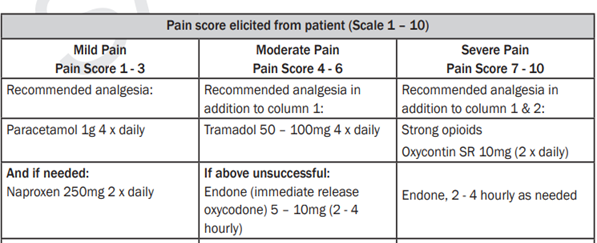
Reading Part A tests your ability to skim and scan quickly across different types of medical texts to accurately retrieve information. This is a critical skill in any workplace healthcare setting. You can learn to use the right reading skills for Reading Part A questions on our blog as well as refer to this article to boost your skills.
The assessors are not only testing your ability to search for and find the correct information, but also whether you are paying close attention to what the question is asking you. With only 15 minutes to complete 20 questions, it is common for candidates to feel under pressure and easily misread the questions before searching for the answer.
In this article we focus on one key area where candidates often lose marks and give you some useful tips to help you avoid misinterpreting these Reading Part A questions. Read on to learn more about how to maximize your score.
In each Reading Part A paper, there are likely to be open questions or gap-fill questions relating to the numerical range of data listed within the texts. The answer may, for example, relate to specific doses of medications, times or dates.
Here are some example questions made using the official OET Sample Reading Test 3 texts:
1. What is the maximum single dose of Tramadol for moderate pain?

Answer: 50-100 mg = wrong. The question does not ask for the complete range of dosage.
Answer: 100 mg 4 X daily = wrong. The question does not ask for the frequency.
Answer: 100 mg = correct.
Poor attention to the wording of these Reading Part A questions can easily lead to a misunderstanding and the wrong information being written. It is critical to note the key words in these questions.
Here, the words maximum and single tell you to look only for the highest part of the dosage numerical range when writing the answer.
2. Children should receive no more than __________ mg of naproxen per kilo of weight.

Answer: 5-10 mg = wrong. The question does not ask for the complete dosage range or unit of measurement.
Answer: 10 mg = wrong. The question does not ask for the unit of measurement. It is already in the question.
Answer: 10 = correct.
Here, the key words to focus on are no more than (which means the same as ‘the maximum’).
|
Candidate quote: “If I write the whole range of data, then surely the answer will be included there somewhere, and it will be marked correct, right?”
|
Wrong! When candidates try to ‘cover all bases’ by including everything in the range, or include unnecessary words, they are not answering the question accurately. This will score them 0 marks. You are being tested on your ability to interact with the question, isolate the right information needed, before searching for the answer. In the workplace, this level of accuracy and attention to detail is a required skill.
Here are some tips to help you accurately answer questions in Reading Part A:
| Tip 1: | Tip 2: |
|
Don’t include the letter of the text where you found the answer (A, B,C or D). This is unnecessary and may be seen as ambiguous. It will score you 0 marks for this answer. Example: Question: What minimum daily dose of Levothyroxine sodium should be given to a 4-month-old patient with hypothyroidism? Candidate: 8 mcg per kg, D = wrong Candidate: 8 mcg per kg, (D) = wrong |
Practise identifying the language used for this type of question and remember to pause and think carefully about the exact meaning, before studying the text for the answer. This will help you to avoid misinterpreting the question. Notice some key words such as these below, which may help you to identify what the assessors are looking for: maximum/minimum/most/at least/the most/highest/lowest |
If you're looking for more tips on what to do and what not to do in Reading Part A, watch OET expert Rebecca's video on how to succeed in Reading Part A:
QUIZ: Test your knowledge
Now read these four Reading Part A questions and choose one correct answer from the 3 choices.
Text 1 (for questions 1 & 2):

Question 1. What is the lowest dose of ibuprofen per kilo recommended for children?
a) 2.5 mg
b) 2.5-10 mg (max 600 mg)
c) 2.5 mg/kg
Question 2. At least __________ hours should be allowed between each dose of ibuprofen to children.
a) 6-8
b) 6
c) 6-8 hours
Text 2 (for question 3):
Question 3. What minimum daily dose of Levothyroxine sodium should be given to a 4-month-old patient with hypothyroidism?
a) 8 mcg/kg per day
b) 10 mcg/kg
c) 8 mcg per kg
Text 3 (for question 4):
Question 4. What is the minimum interval of administering Endone for moderate and severe pain?
a) 2
b) 2-4 hourly
c) 2-hourly
ANSWERS: 1. a 2. b 3. c 4. c
If you want to learn more, read our Frequently Asked Questions
We address more questions about Reading Part A from candidates in the second part of this article. Read it to learn more about best practices, tips and what mistakes to avoid so you can score high in the Reading sub-test.

